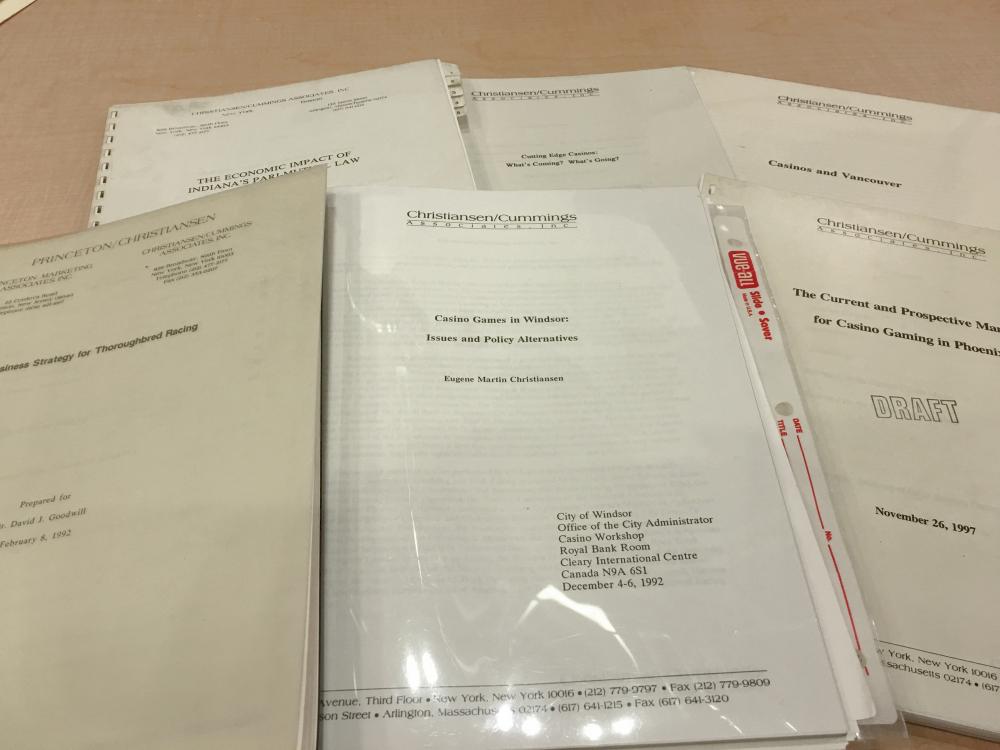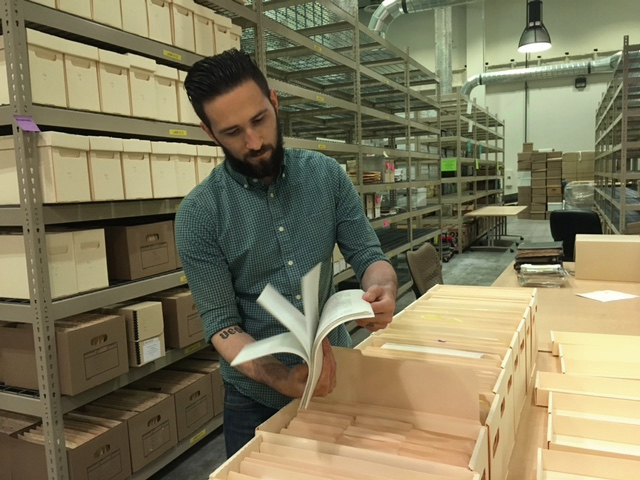
A selection of reports from the Eugene Martin Christiansen Papers, 1948-2015. MS-00561. Special Collections, University Libraries, University of Nevada, Las Vegas.
Deciding whether or not to build a multi-million dollar casino is fraught with complications: what are the local and state laws? What is the per capita income of the surrounding areas? How much competition will the casino face for entertainment dollars? Feasibility studies can help answer these kinds of questions, and Eugene Martin Christiansen, who has worked as a gaming consultant in the gaming industry since the late 1970s, has written, commissioned, and collected more than 550 different kinds of studies that look at gaming in the United States. I’m currently processing and describing the Eugene Martin Christiansen Papers (MS-00561) as part of a grant funded by the National Historical Publications and Records Commission. The grant-funded project has allowed UNLV University Libraries Special Collections to process and organize the collection in order to preserve it, make it accessible to researchers, and increase the visibility of the historical materials. Most of these studies were conducted for city governments and private ventures and have never been published, so they will be available to gaming researchers for the first time through this collection.
The Christiansen Papers contain research files, reports, and presentations about gambling from approximately 1950 to 2015. The collection includes reports about legal and illegal gaming, including subjects such as economic impacts of legalized gaming, popularity of off-track betting, horse and dog racing, table games, gambling addiction, gaming regulation, taxes, lotteries, Native American gaming, and internet gaming. The collection primarily focuses on the United States--and particularly on state-level and municipal-level regulation of gaming.
In one in part of the collection, we have 49 boxes containing more than 550 academic reports, many of which deal with the economic, social, political, and legal feasibility of building casinos, racetracks, and other gaming ventures in various localities.

Lindsay Oden stands in front of several boxes of reports in the Eugene Martin Christiansen Papers.
For example, researchers will find several feasibility studies on Dubuque, Iowa. Christiansen’s company produced one entitled “Projections for Attendance and Wagering at Dubuque Greyhound Park and Waterloo Greyhound Park,” written in 1993. Another is, “The Prospects for Riverboat Gambling in Dubuque.” As the city attempted to expand its tourism industry and raise revenue, several consulting firms attempted to help the city and private companies decide if gambling establishments would meet those goals. These reports offer deep insights into the city’s economic and financial circumstances, including analyses of income, competition, possibilities for growth, and other significant industries in the city.
Other reports in this collection address broader issues of feasibility as well. They examine legislative trends that may affect gaming and other kinds of economic activity (“The Economic Impact of Indiana's Pari-mutuel Law” from 1989); they analyze the differences between state-run and privately-owned lotteries (“Performance Review, Analysis, Valuation and Privatization Options: District of Columbia Lottery” from 2009); they address concerns about off-track betting and simulcasting (“The Projected Performance of Satellite Wagering Facilities in Florida” from 1990); and they even attempt to quantify what kinds of audiences would be attracted to gambling activities (“The Bruskin Report: Public Attitudes Toward Harness Racing” from 1987). Overall, these reports cover a wide spectrum of economic and social activity, which may be useful to researchers in economics, political science, history, sociology, and geography.

We have more studies than a college during midterms.
By the end of April, we plan to have the full list of all these reports, in addition to the rest of the contents of the Christiansen Papers, available to researchers. Researchers from multiple disciplines will find this collection useful, and the collection’s extensive resources illustrate numerous economic and social trends in gaming and entertainment in the second half of the twentieth century.


